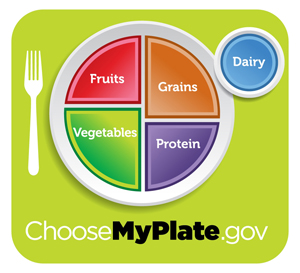It's the "B" in a BLT sandwich, the star of breakfast buffets, the garnish on a spinach salad, and the "pork" in pork-and-beans. Bacon imparts a smoky flavor to many dishes. This ancient, cured meat now appears in such modern forms as shelf-stable or refrigerated fully cooked strips, bacon made from turkey and/or beef, and meats certified as organic.
The term "bacon" is used to describe the cured belly of a swine (hog) carcass. If meat from other portions of the carcass is used, the product name must identify the portions where the bacon comes from, e.g., "Pork Shoulder Bacon." Bacon is generally produced from young animals (6 to 7 months old) that weigh between 175 to 240 pounds.
Bacon and Food Safety
Bacon is made with salt as a curing agent, and nitrite (but not nitrate) is the other most frequently used additive. Bacon may also contain other additives such as sugars, maple sugar, wood smoke, flavorings, and spices.
Under certain conditions not yet fully understood, the products from the natural breakdown of proteins known as "amines" can combine with nitrites to form compounds known as "nitrosamines." There are many different types of nitrosamines, most of which are known carcinogens in test animals.
Not all cured meat products contain nitrosamines; however, when present, they usually are in very minute amounts. Many variables influence nitrosamine levels: amount of nitrite added during processing, concentrations of amines in meat, type and amounts of other ingredients used in processing, actual processing conditions, length of storage, storage temperatures, method of cooking, and degree of doneness.
Researchers at the USDA's Agricultural Research Service (ARS) found that the addition of vitamin C (ascorbate) and vitamin E (tocopherol) reduced the levels of nitrosamines in fried bacon and in nitrite-cured products. The findings led to changes in Federal regulations and industry processing to minimize consumer exposure to nitrosamines. USDA now requires adding 550 ppm (parts per million) of either sodium ascorbate or sodium erythorbate to pumped bacon. This addition greatly reduces the amount of free nitrite and, thus, minimizes the formation of nitrosamines. This regulation is found in 9 Code of Federal Regulations (CFR) 424.22 (b)(1).
Under certain conditions not yet fully understood, the products from the natural breakdown of proteins known as "amines" can combine with nitrites to form compounds known as "nitrosamines." There are many different types of nitrosamines, most of which are known carcinogens in test animals.
Not all cured meat products contain nitrosamines; however, when present, they usually are in very minute amounts. Many variables influence nitrosamine levels: amount of nitrite added during processing, concentrations of amines in meat, type and amounts of other ingredients used in processing, actual processing conditions, length of storage, storage temperatures, method of cooking, and degree of doneness.
Researchers at the USDA's Agricultural Research Service (ARS) found that the addition of vitamin C (ascorbate) and vitamin E (tocopherol) reduced the levels of nitrosamines in fried bacon and in nitrite-cured products. The findings led to changes in Federal regulations and industry processing to minimize consumer exposure to nitrosamines. USDA now requires adding 550 ppm (parts per million) of either sodium ascorbate or sodium erythorbate to pumped bacon. This addition greatly reduces the amount of free nitrite and, thus, minimizes the formation of nitrosamines. This regulation is found in 9 Code of Federal Regulations (CFR) 424.22 (b)(1).
Nutrition Information
BLT Sandwich
References
1. Wikipedia, List of bacon dishes
2. Eat Right Chicago, Is Everything Really ‘Better with Bacon?’
3. USDA, Bacon and Food Safety
2. Eat Right Chicago, Is Everything Really ‘Better with Bacon?’
3. USDA, Bacon and Food Safety
An educated consumer has the knowledge to make healthy choices - Choose Moderation.



































